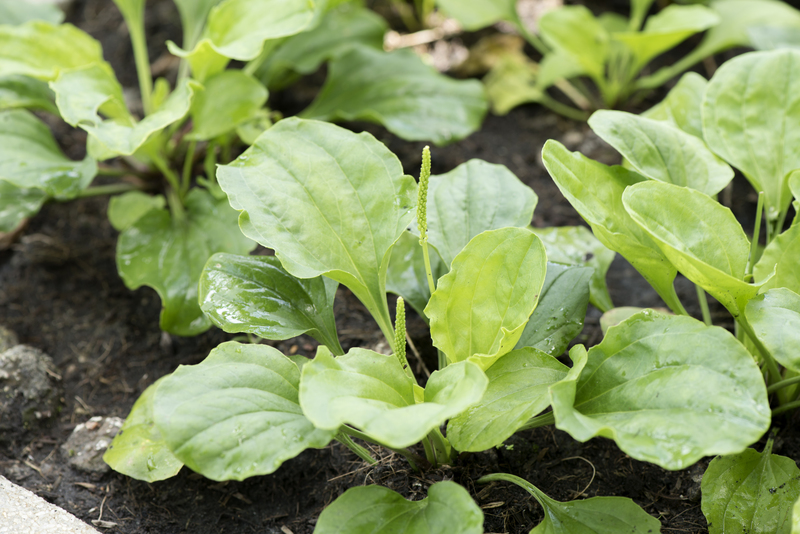Transform Your Garden with Hedge Trimming Styles
Posted on 26/06/2025
Transform Your Garden with Hedge Trimming Styles
Looking to add character and charm to your landscape? Transform your garden with hedge trimming styles that reflect your personal taste and enhance your outdoor living space. With a variety of methods, techniques, and shapes to choose from, skillful hedge trimming not only beautifies your property but also maintains healthy plant growth. Whether you're an experienced gardener or a beginner, discovering the right hedge trimming styles can make all the difference in your garden's appearance and health.

Why Hedge Trimming Styles Matter
Far from being a mere maintenance task, hedge trimming is an art that shapes the essence and mood of any garden. Proper hedge shaping and cutting can:
- Increase privacy and security for your property
- Define garden boundaries and pathways elegantly
- Offer food and shelter for wildlife
- Improve air quality around your home
- Showcase creativity and personal style
With thoughtful hedge design and pruning techniques, you can truly transform your garden into a beautiful retreat.
The Art of Hedge Trimming: An Overview
Understanding the basics of hedge trimming techniques will help you choose the right approach for your space. Not only does effective trimming promote dense growth, but it also prevents disease and extends the life of your plants. In this comprehensive guide, we cover:
- Popular hedge trimming styles
- Best plants for different shaped hedges
- Essential tools for neat trimming
- Step-by-step pruning tips
- Seasonal trimming advice
Let's dive into the diverse hedge cutting styles that can revolutionize your home garden.
Top Hedge Trimming Styles to Transform Your Garden
1. Formal Hedge Trimming
Formal hedge styles are characterized by their neat, geometric shapes. Landscapes with rectangular, square, or rounded hedges offer a crisp and structured look--ideal for traditional and modern gardens alike. Benefits of formal hedging include:
- Defined lines and symmetry
- Easy customization for height and width
- Elegant framing of walkways and properties
Popular plants for formal hedge trimming include boxwood, yew, privet, and holly. To achieve the best results, use sharp shears and cut regularly during the growing season.
2. Informal Hedge Shaping
If you prefer a more natural look, informal hedge styles allow shrubs to grow into softer, uneven shapes. This technique mimics the organic flow of nature and works well for cottage gardens, wildlife-friendly zones, or areas with flowering shrubs. The key features of informal hedging are:
- Flowing, relaxed forms
- Attracts pollinators and birds
- Low-maintenance and forgiving
Roses, lilac, forsythia, and viburnum make excellent informal hedges. Prune selectively after flowering to maintain shape and promote blooms.
3. Topiary Art: Creative Hedge Sculpting
Take your garden transformation to the next level with topiary hedges. This ancient art involves carving shrubs into specific shapes--think spirals, animals, or intricate geometric patterns. Topiary requires patience but results in truly unique garden features. Essential tips for topiary:
- Select slow-growing, dense-leaf plants like boxwood and yew
- Start with simple shapes before advancing to complex designs
- Trim 2-3 times per year to maintain definition
Topiary instantly adds whimsy and sophistication, making it ideal for focal points in any landscape.
4. Living Walls and Vertical Hedging
Modern landscapes often feature living walls--hedge plants grown along vertical structures as privacy screens or garden dividers. Vertical hedging is perfect for maximizing small spaces or creating distinct garden "rooms." Benefits include:
- Space-saving in urban gardens
- Visual interest and privacy
- Opportunities for creative plant combinations
Try espaliered fruit trees, climbing evergreens, or bamboo for innovative vertical hedge style solutions.
5. Mosaic and Mixed Hedge Designs
Why settle for a single species or color? Mixed hedges weave together different plants for year-round interest, blooms, and foliage textures. Combine evergreen and deciduous varieties, or alternate plants with different leaf colors for a striking "mosaic" effect. Some advantages include:
- Enhances biodiversity
- Seasonal changes in color and texture
- Reduced susceptibility to pests and diseases
Plan ahead to ensure compatible growth rates and maintenance requirements for a harmonious living tapestry.
Choosing the Right Hedges for Every Style
The success of your garden transformation depends largely on selecting the right plants for your hedge trimming ambitions. Consider these factors:
- Climate: Select hardy, well-adapted species
- Soil type and drainage
- Sunlight exposure
- Growth rate & mature size
- Desired hedge style and maintenance levels
Here are some popular options based on hedge form:
Best Plants for Formal Hedges
- Boxwood (Buxus sempervirens)
- Yew (Taxus baccata)
- Privet (Ligustrum species)
- English laurel (Prunus laurocerasus)
- Hornbeam (Carpinus betulus)
Best Shrubs for Informal & Flowering Hedges
- Forsythia
- Hydrangea
- Spirea
- Rose of Sharon (Hibiscus syriacus)
- Barberry (Berberis species)
Topiary-Friendly Hedge Plants
- Boxwood
- Japanese holly (Ilex crenata)
- Yew
- Privet
Choose healthy, disease-free young plants for the best start, and don't be afraid to experiment with new hedge ideas!
Essential Tools for Professional-Looking Hedges
Having the right tools is crucial for achieving clean lines and healthy plants. Invest in quality equipment for safety and ease:
- Hedge shears: Manual or powered for even, straight cuts
- Secateurs: For fine pruning and shaping
- Loppers: To remove thicker, woody branches
- Long-reach trimmers: Ideal for tall hedges
- String, stakes, or laser lines: For guiding symmetrical trims
- Safety gloves & goggles: To protect hands and eyes
Sharpen blades regularly and clean tools after use to prevent disease spread.
Step-by-Step Guide: How to Trim a Hedge Like a Pro
- Plan your shape and size: Use string or stakes for straight lines, or templates for curves and topiary.
- Start with the sides: Cut from bottom to top for even growth and access to light.
- Trim the tops: Keep tops slightly narrower than the base (a "batter"), allowing lower leaves to receive sunlight and avoid bare patches.
- Remove cuttings: Shake branches and remove debris to allow airflow and prevent disease.
- Step back and check symmetry: Adjust as needed, taking small amounts of growth at a time for precision.
Always trim after the risk of frost has passed, and avoid pruning late in the season to prevent winter damage to new growth.
Seasonal Hedge Trimming Calendar
The timing of your hedge maintenance can make or break the look and health of your plants. Follow these seasonal tips:
- Spring: Major pruning for shaping and removing winter damage; flowering shrubs should be pruned after blooming.
- Summer: Light trimming to maintain shape, especially for formal hedges.
- Autumn: Last tidy-up before winter, but avoid intensive cuts that expose fresh growth to frost.
- Winter: Minimal activity; suitable for dormant species like yew, but avoid harsh weather.
Creative Hedge Trimming Ideas
Inject personality into your landscape with these creative approaches:
- Maze gardens: Design winding paths for a sense of mystery and adventure.
- Hedge arches: Frame garden entrances with trained archways.
- Hedge spirals and cones: Use topiary methods to create dynamic shapes.
- Themed gardens: Trim hedges to echo motifs--waves for coastal themes, or animals for playful spaces.
Don't be afraid to try bold or unusual hedge designs--it's your canvas!
Common Mistakes in Hedge Trimming (and How to Avoid Them)
- Over-trimming, causing stress or bare patches
- Incorrect timing, leading to poor flower or fruit production
- Using blunt or dirty tools that damage stems
- Letting hedges become too tall or wide for easy maintenance
Transform your garden with hedge trimming styles by planning ahead, using the right equipment, and learning from common pitfalls.

Final Tips: Maintaining Healthy and Stunning Hedges
Want to ensure your garden transformation lasts? Remember these essentials:
- Water newly trimmed hedges thoroughly
- Mulch and feed regularly to promote lush, healthy growth
- Repair gaps by layering branches or planting new shrubs
- Monitor for pests and diseases
Regular attention, timely hedge trimming, and a dash of creativity will keep your landscape looking fresh and inviting.
Conclusion: Transform Your Garden with Hedge Trimming Styles
Hedge trimming is more than just routine garden care--it's a unique opportunity to express your personality, boost your property value, and create an outdoor oasis you'll love year-round. By exploring different hedge trimming styles and techniques, you can transform your garden into a breathtaking backdrop for relaxation, entertaining, and everyday living.
Ready to start your garden makeover? Grab your tools, pick your favorite hedging style, and see how your landscape blossoms.

